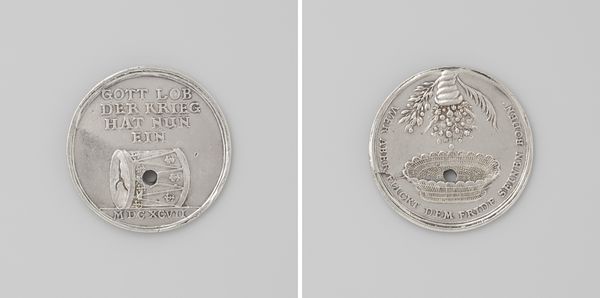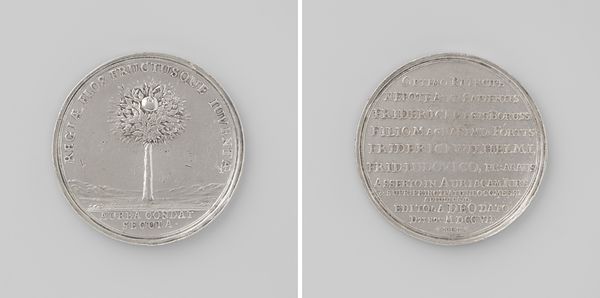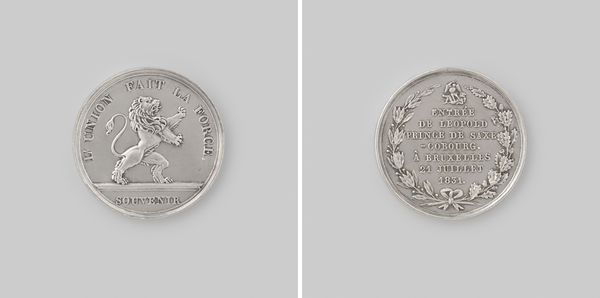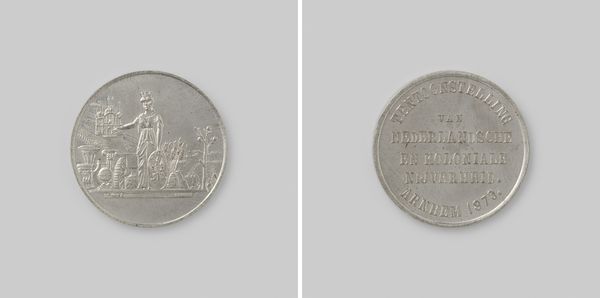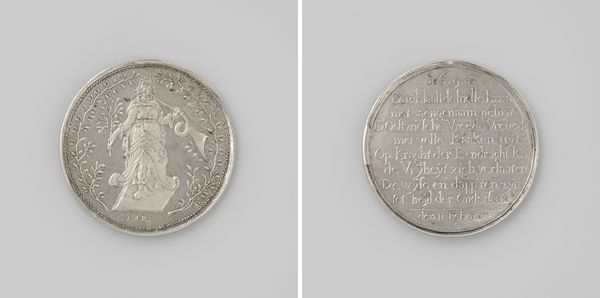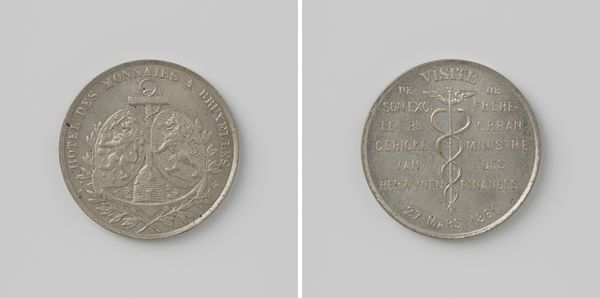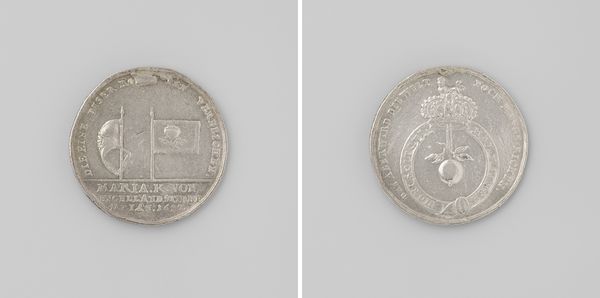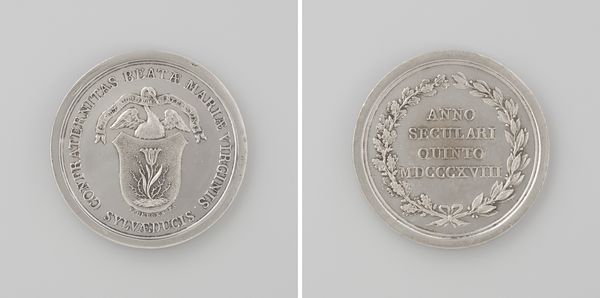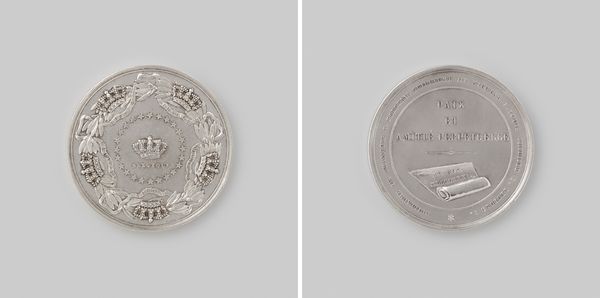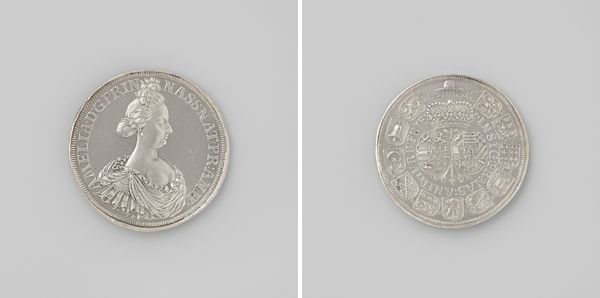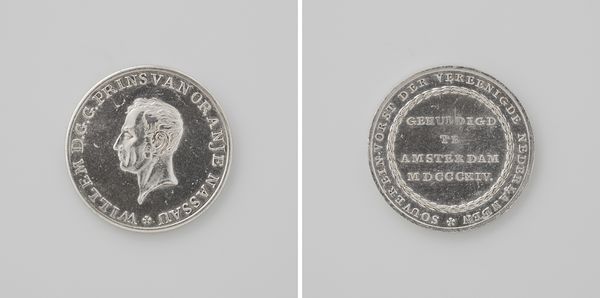
Dimensions: diameter 3.4 cm, weight 14.49 gr
Copyright: Rijks Museum: Open Domain
Curator: Let's turn our attention to this relief engraving: Christian Wermuth's "Peace of Rijswijk," created in 1697. It's quite a striking commemorative medal. Editor: It feels somber, almost weighty, despite its small size. The crispness of the engraving gives it an incredible tactile quality. Curator: It's certainly a fascinating object to consider within the context of late 17th-century European power dynamics. The Treaty of Rijswijk aimed to establish peace between France and the Grand Alliance. A metal token like this functions as propaganda as much as a memento. Editor: Exactly. The choice of metal, probably silver, speaks volumes about its intended audience and the message being conveyed. Silver was both precious and easily worked, perfect for distributing relatively widely but also conveying prestige. Look at how precise the rendering of the drums, instruments of war is in comparison with the bowl brimming with ripe fruits representing prosperity and concord. Curator: Indeed. Note how the inscription on one side translates to "God be praised, the war is now over." The medal celebrates the cessation of conflict, framing it as divinely ordained, lending the peace a certain... legitimacy. Wermuth clearly wants us to view this event through a specific, optimistic lens. Editor: Right, but that surface gleam also distracts us from the raw realities. We lose track of how it’s fabricated; a die had to be engraved to stamp these medals out in bulk, requiring specialized knowledge. We often forget the labor inherent in such seemingly refined objects. Curator: That’s a crucial point. While ostensibly celebrating peace and divine providence, the production of this medal depended on skilled artisans, contributing to the economic infrastructure even during a time of reconstruction. Metal also wasn't cheap and neither was the engraver himself: it speaks to both celebration but also rebuilding economic systems. Editor: Thinking about Wermuth's workshop itself: did he melt his own metals or have workers or were resources bought externally from trading merchants? These medals weren’t created in a vacuum. The materials and hands behind them contributed to what it ultimately signifies. Curator: A powerful point – it moves beyond the face-value of commemorating a historical treaty and asks us to see how complex social production is embedded in this moment. I agree. Editor: Examining it, both physically and historically, exposes layers of meaning. The object as propaganda but also as craft; really rewarding.
Comments
No comments
Be the first to comment and join the conversation on the ultimate creative platform.
